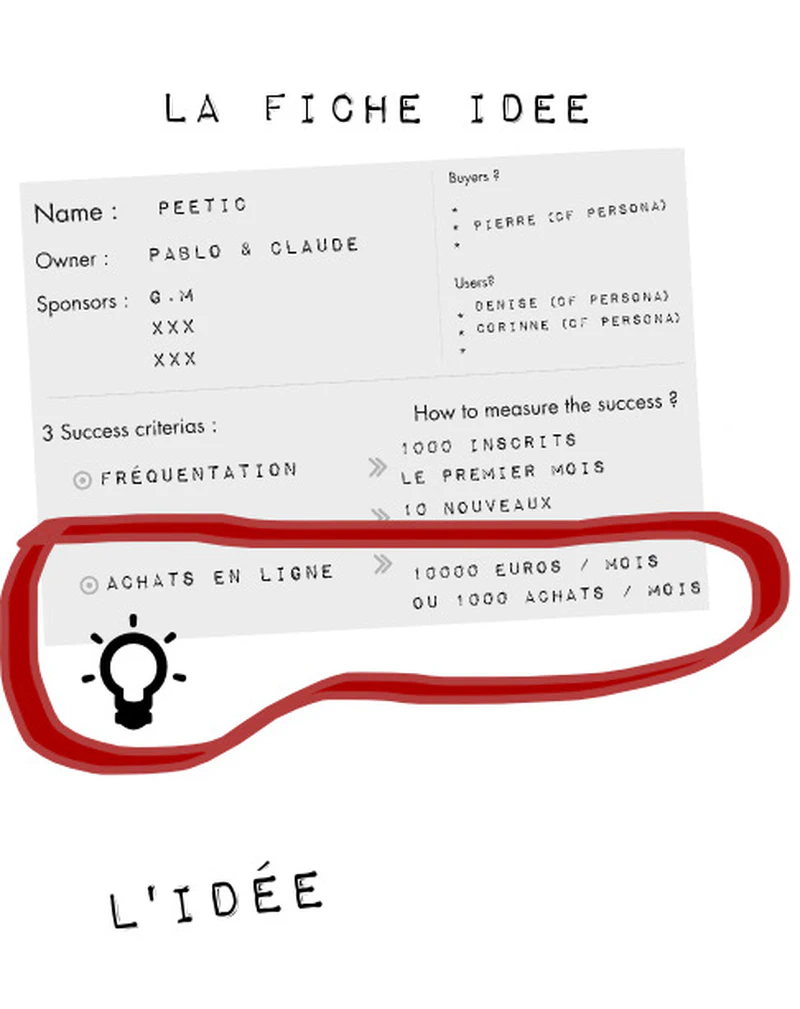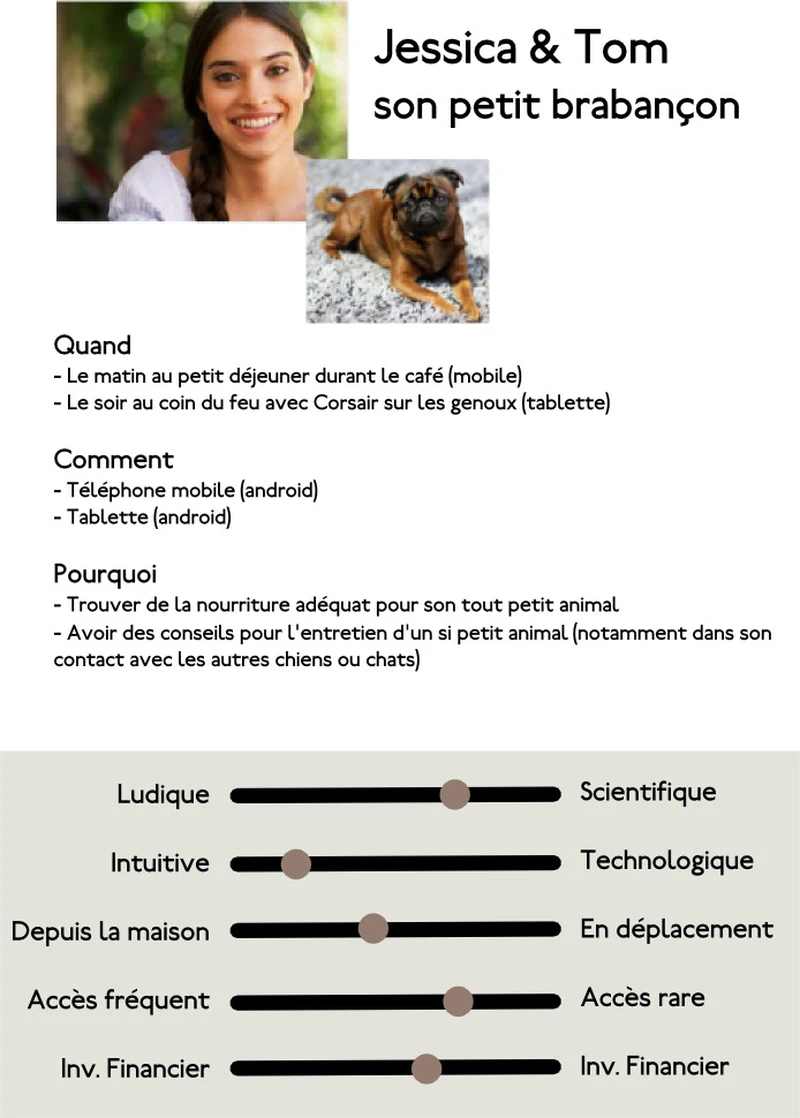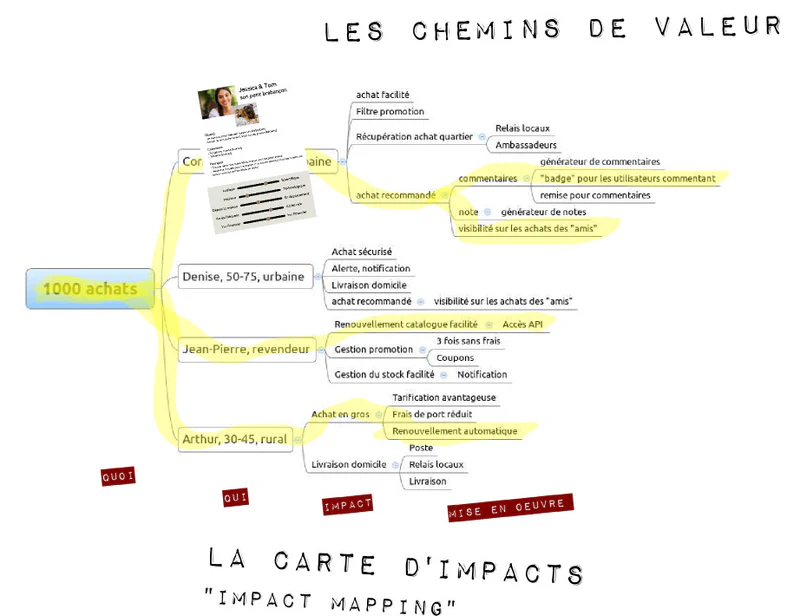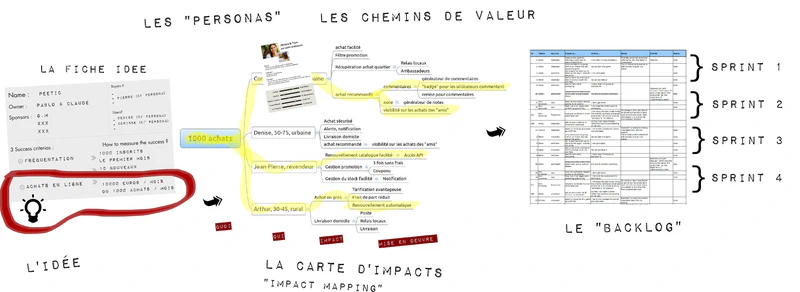I suggest following a classic path from needs expression to product plan. Note that all of this is just a fictitious example based on Peetic, and that in any case, a product plan is nothing more than an estimate. This is a quick summary of what I use, and I don’t dig deeply into each concept—I invite you to search the web where you’ll find what you need.
The idea, the target, the proposition
Let’s start with the idea: you have an idea, a need. If we look back at Peetic (on which we will—with Claude Aubry—relaunch our efforts, this will be the subject of the next article), let’s say that it seems obvious after the site’s launch, and after reaching our first thousand registered users (as planned!), to now grow online sales. This is our target, our idea, our proposition.
The idea or proposition sheet
So let’s create an idea or proposition sheet. I suggest keeping it very concise to be very clear. Choose your words carefully. Communication is key, as always. It consists of personas, success criteria (let’s say limiting them to three and prioritizing them is a plus), and especially the measurements to be taken to validate the success or not. It’s essential to balance the success criteria with the question: how do we measure it?
We include the personas in this sheet either succinctly or not. They can be developed further later.
In my scenario, let’s say the first two success criteria have been met, and we’re going to focus on the third: 10,000 euros in purchases per month (or 1000 purchases per month). It’s indeed from the measurement that we start to trigger impact mapping, or the impact map.

The impact map
Through 4 steps it defines behavioral scenarios. 4 steps: what, who, impact, implementation, that is: a) what do we want, b) who must we impact to reach this objective, c) how must this person be impacted to reach this objective, d) how do we implement this impact. The fourth point (which can be broken down into several stages) constitutes the user stories of our backlog.
The personas
This is potentially when we will have explored the personas a bit more.

The value path
For each step and each branch of the impact map, we’ll take care to question the value, and which are the most interesting branches. Even if it means not working on all branches. (Potentially we could define the value by asking participants for a “buy a feature”).

The backlog
By selecting the value branches and prioritizing them, we finally get the user stories that make up the backlog.

The release plan
We’re going to estimate the releases that make sense, the minimum products offering enough value to be delivered, through this backlog. It’s indeed a plan, it’s not final, it could, might change.
The product plan
If the product is made up of several teams / projects, we can consolidate them through a single product plan. In order to clearly visualize the rhythms, synchronizations, dependencies, etc. It’s indeed a plan, it’s not final, it could, might change.

Comments
Géraldine (@ge_legris) tells me:
Thanks Pablo for this article which has the merit of organizing several concepts to make a complete path. I was missing that! On my side, I have the Po do the prioritization work twice: I ask them to prioritize the branches of the impact map, then I have them use the moscow method to refine the prioritization even more but this time within the backlog. It’s a bit tedious but it forces them to sort things out upstream and continuously. What do you think? Finally, Pos encounter a real difficulty in defining the “how”. I tell them that it’s about the activities that will allow us to reach the objectives. But we can see in the Peetic example that it’s still not quite that…